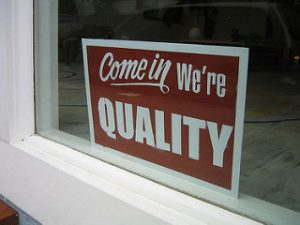Ensuring Your Building’s Indoor Air Quality
 Whether at home, work or school, we will each spend almost 90 percent of the time in a building of some type. Because we spend so much time indoors, it’s vitally important that the indoor air we breathe is clean, fresh and free from contaminants. Unfortunately, it’s also true that indoor air tends to be as much as five times more polluted than outdoor air. In your commercial or industrial building, retail facility or other structure, ensuring your building’s indoor air quality (IAQ) is critical to the comfort and health of your employees and customers.
Whether at home, work or school, we will each spend almost 90 percent of the time in a building of some type. Because we spend so much time indoors, it’s vitally important that the indoor air we breathe is clean, fresh and free from contaminants. Unfortunately, it’s also true that indoor air tends to be as much as five times more polluted than outdoor air. In your commercial or industrial building, retail facility or other structure, ensuring your building’s indoor air quality (IAQ) is critical to the comfort and health of your employees and customers.
Types of indoor air pollutants
Ensuring your building’s indoor air quality requires knowing what types of indoor air pollutants you may encounter.
- Particulates: Particulates are extremely small solid particles, liquid droplets or a combination of the two. Particulates can be generated as items experience wear, by humans or animals sneezing or coughing or by activities that create or disperse fragments of material, such as sawing, sanding or cleaning. Inorganic particulates include dust, fibers, metal fragments and dirt. Biological contaminants include organic matter and organisms such as mold, pollen, bacteria, dust mites, insect fragments and animal dander.
- Gaseous pollutants: This category includes fumes, exhaust gases, smoke and odors. Perhaps the most dangerous type of indoor gaseous pollutant is carbon monoxide, an exhaust gas produced by fuel-burning equipment such as furnaces, stoves and heaters.
Effects of poor indoor air quality
- Physical discomfort: Low IAQ can cause physical symptoms such as irritated eyes, scratchy throats, headaches, dizziness and fatigue.
- Respiratory issues: Poor indoor air quality can trigger or worsen respiratory conditions such as asthma and allergies.
- Disease: Viruses, bacteria, germs and other microorganisms in your indoor air can transmit communicable diseases such as colds and flu.
- Death: In the most severe cases, indoor air pollution can cause death. This can occur, for example, when persons are exposed to a large quantity of carbon monoxide.
Maintaining indoor air quality
In most cases, simple steps can be used for ensuring your building’s indoor air quality.
- Have preventive maintenance performed. Preventive maintenance and seasonal tune-ups on your heating and cooling systems will keep these devices working properly and will cut down on the amount of pollutants they produce. Make sure drain pans and coils are cleaned to reduce odors and the possibility of mold growth.
- Change or clean HVAC system air filters regularly. The air filters in your heating and cooling systems capture and trap particulate matter in the air that flows through the system. Check filters regularly and change or clean them when they get dirty. In a commercial or retail setting, filters may need to be checked and changed weekly.
- Increase indoor ventilation and airflow to better disperse odors, particulates and other contaminants. Depending on the weather and time of year, this could include opening windows, running fans or installing a ventilation system designed to accommodate your building or facility. Make sure fresh-air intakes and exhaust systems are working correctly.
- Reduce moisture buildup. Find and stop water leaks and repair areas of dampness that could cause moisture to accumulate and lead to mold growth. Install a large-scale dehumidification system if necessary.
- Use source control to stop indoor air pollution before it begins by reducing or eliminating its source, where possible. Take steps such as reducing activities that create particulates or pollutants, reducing or eliminating the use of substances with strong odors, prohibiting smoking and cleaning and getting rid of trash regularly.
- Install an air filtration or purification system. Large-scale, high-quality air treatment systems help substantially with ensuring your building’s indoor air quality. HEPA (High-Efficiency Particulate Air) systems, for example, can keep indoor air free of almost all pollutants. Ultraviolet (UV) light systems add powerful lights that eliminate microorganisms.
Our goal is to help educate our customers about Plumbing, HVACR, Fire Protection and Alarm Systems in Mechanical, Commercial and Residential settings. For more information about ensuring your building’s indoor air quality and to view projects we’ve worked on, visit our website!
Image Credit: Shira Golding







